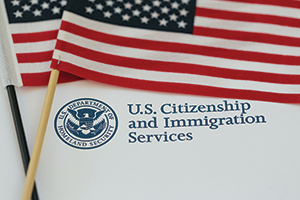Executive Order affects H-2B visa program

|
On June 22, President Trump issued an Executive Order extending current restrictions on certain immigrant visas that have been in place since April and expanded those entry restrictions to certain non-immigrant visa categories, including the H-2B seasonal guest worker program used by some roofing companies to meet their seasonal workforce needs.
The order, “Proclamation Suspending the Entry of Aliens Who Present a Risk to the U.S. Labor Market Following the Coronavirus Outbreak,” suspends the entry of guest workers enrolled in the H-2B program and other visa programs through the end of 2020. The entry restrictions apply to individuals who meet all the following criteria:
- They are outside the U.S. on the effective date of the proclamation, which was Wednesday, June 24.
- They do not have a nonimmigrant visa that was valid as of June 24.
- They do not have an official travel document other than a visa (such as a transportation letter, an appropriate boarding foil or an advance parole document) that was valid on June 24 or issued on any date thereafter that permits them to travel to the U.S. and seek entry or admission.
It is NRCA’s understanding that individuals who had valid H-2B visas before June 24 and also entered the U.S. on or before that date will be able to participate in the H-2B program this year. The proclamation will be reviewed periodically, and the Department of Homeland Security, in consultation with the Department of Labor and Department of State, can recommend modifications to the proclamation’s restrictions in the future.
The Trump administration portrayed the Executive Order as a way to ensure currently unemployed Americans have the opportunity to obtain seasonal jobs in an economy reeling from the COVID-19 pandemic.
However, many business groups opposed the order, including the H-2B Workforce Coalition, of which NRCA is a member. The coalition issued a statement noting despite high unemployment levels, the need for H-2B visas still is strong “due to factors such as the seasonality of the work, the nature of the work and the location of the job.” The statement further called on the Trump administration to “re-visit the order’s restriction on the issuance of H-2B visas.”
U.S. Supreme Court issues workplace discrimination ruling
In a 6-3 decision issued June 15, the U.S. Supreme Court ruled Title VII of the Civil Rights Act of 1964 protects gay and transgender employees and job applicants from workplace discrimination. All employers should be aware of the ruling’s implications.
Title VII, which is a federal law that has been in place for more than 50 years, applies to employers with 15 or more employees and makes it illegal to discriminate against job applicants and employees based on their race, color, national origin, religion or sex. In its ruling, the Supreme Court confirmed Title VII’s prohibition against discrimination based on “sex” extends to an employee’s or applicant’s sexual orientation or gender identity.
The Supreme Court’s decision, authored by Justice Neil Gorsuch, means Title VII prohibits employers with at least 15 employees from taking adverse employment action (termination, demotion, refusal to hire, etc.) against employees or job applicants based on their sexual orientation or gender identification. In light of the ruling, roofing industry employers should review their employment manuals and human resource policies and practices to ensure compliance with federal law.
OSHA issues guidance regarding returning to work
The Occupational Safety and Health Administration has issued Guidance on Returning to Work to help employers reopen nonessential businesses and employees return to work during the COVID-19 pandemic, according to www.osha.gov.
The guidance supplements the Department of Labor’s and Department of Health and Human Services’ previously developed Guidance on Preparing Workplaces for COVID-19 and the White House’s Guidelines for Opening Up America Again.
OSHA’s guidance provides general principles for updating restrictions originally put in place to slow the spread of COVID-19. During each phase of the reopening process, employers should continue to focus on strategies for basic hygiene, social distancing, identification and isolation of sick employees, workplace controls and flexibilities, and employee training. The guidance also describes applicable OSHA standards and required protections in the workplace and addresses employers’ frequently asked questions.
OSHA’s Guidance on Returning to Work is available at www.osha.gov/SLTC/covid-19.



